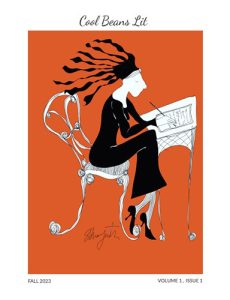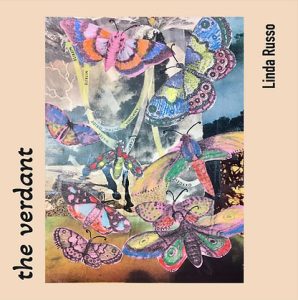The Texas Review – Spring/Summer 2013
Volume 34 Numbers 1 & 2
Spring/Summer 2013
Biannual
Sarah Gorman
As a south Texas native who relocated from the state in 1966, I immediately associate the town of Huntsville with its state prison. The Texas State Penitentiary at Huntsville is the oldest of the state’s prisons, having been in operation since 1849. The unit boasts two distinctions: it houses the execution chamber where the largest number of prisoner executions in the United States are carried out, and from 1931 through 1986 it sponsored the Texas State Prison Rodeo. The rodeo arena was razed in early 2012, marking the end of a colorful piece of Texas history. Today, according to the Texas prison inmates’ handbook, the authorized team sports available to prisoners are softball, volleyball, and baseball.
As a south Texas native who relocated from the state in 1966, I immediately associate the town of Huntsville with its state prison. The Texas State Penitentiary at Huntsville is the oldest of the state’s prisons, having been in operation since 1849. The unit boasts two distinctions: it houses the execution chamber where the largest number of prisoner executions in the United States are carried out, and from 1931 through 1986 it sponsored the Texas State Prison Rodeo. The rodeo arena was razed in early 2012, marking the end of a colorful piece of Texas history. Today, according to the Texas prison inmates’ handbook, the authorized team sports available to prisoners are softball, volleyball, and baseball.
I was glad to expand my view of Huntsville as I read through this issue of The Texas Review, published by the English Department at Sam Houston State University. The journal publishes fiction, poetry, reviews, and essays; other than on the cover, it does not contain visual art. The compact soft-cover volume is well designed, providing the reader with many points of orientation to the content.
This issue opens with a short story by G.C. Cunningham. His first-person narrative evokes a suffocatingly narrow world circumscribed by poverty, prison, nicotine addiction, and family strife. The work is set in Alabama, not Texas, but nevertheless evokes a world that must be familiar to many of the Huntsville prison’s inmates. The story is hard to read but at the same time impossible to abandon, in part because of its effective use of dramatic irony. The dreadful conditions that define the narrator’s options and those of her nephew, a convicted sexual predator released after twenty years of hard time, are leavened by the promise of a flawed redemption, symbolized by a “corny Valentine” that appears in the story’s conclusion.
Like many other journals, The Texas Review publishes groups of poems by some of its featured writers, offering readers a wider glimpse of the poets’ sensibilities. Writers afforded such an opportunity in this issue include Sarah Cortez, Erin Ganaway, and William Wright, while James McKean and Susan Palwick are represented by single longer poems. Ganaway’s compressed lyrics, expanding from the timeless tradition of pastoral poetry, wring pathos from nature. Her “Unengaged” calls images from the night sky to accompany the dissolution of an engagement:
Days from now,
when this moon is drained from the sky,
when her star has rejoined the others, she will have
only a phantom limb. She will make a fist to keep
the ring from slipping as she washes her hands.
The essays in this issue cover a wide range, confirming the editors’ statement that anything they deem to be “of excellence” is welcome. The entertaining “You’re Not the Boss of Me,” by Lori Jakiela, recounts a series of prickly but amusing encounters with her mother, who is quoted in the title. An excerpt from Thomas Dabbs’s forthcoming book Genesis in Japan: the Bible beyond Christianity depicts some of the author’s experiences teaching the Bible at a university in Tokyo. Concerning the story of the Fall, one of his students asks, “Why would any fruit be forbidden?” Concerning Noah and the flood, another asks, “Do Christian people think this story is true?” Dabbs finds himself advising his class, at one juncture, “Reading the Bible is not the best way to learn about Christianity.” The third essay is a lengthy scholarly article in MLA style, complete with a list of “Works Cited,” by Anis Shivani, analyzing the use of satire in George S. Schuyler and Nathaniel West.
The reviews in this issue range from consideration of Philip Levine’s News of the World to coverage of Harold Jaffe’s OD: Docufictions. Tara Tatum relies on extensive use of quotations from Levine’s work, effacing herself as a reviewer in order to elevate her subject. Each concise review points the reader to a poetry collection or experimental work which promises substantial rewards.
Some former inmates of the Huntsville prison are associated with creative work, including the rappers Chad Butler (“Pimp C”) and Carlos Coy; the artist Henry Ray Clark; the musician Jack Purvis; and Duane (“Dog”) Chapman, who starred in the TV show Dog the Bounty Hunter, suggesting the complexity of human choices that help determine our destinies. In its hospitable treatment of unconventional sensibilities expressed through familiar forms, The Texas Review provides a wide range of readers with opportunities for broadening their understanding of life.
[www.shsu.edu/~eng_www/trp2.html]




